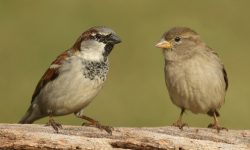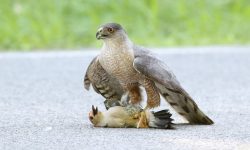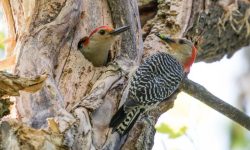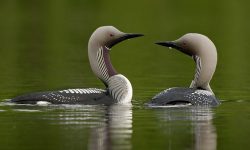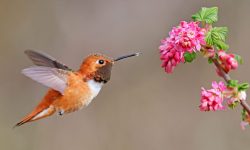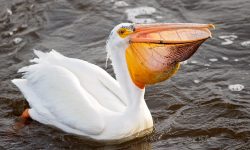Peacocks are among the most majestic and visually captivating birds on Earth, celebrated for their brilliant plumage and fan-like tail displays. But beyond their beauty, these birds have a surprisingly diverse diet that supports their active lifestyles and vibrant feathers. Whether you’re a bird enthusiast, a backyard peafowl keeper, or simply curious, understanding what peacocks eat is key to their health and longevity.
In this comprehensive guide, we’ll explore 15 foods peacocks absolutely love, along with insights into their feeding behavior, nutritional needs, and tips for feeding peafowl in captivity or the wild.
Understanding a Peacock’s Natural Diet
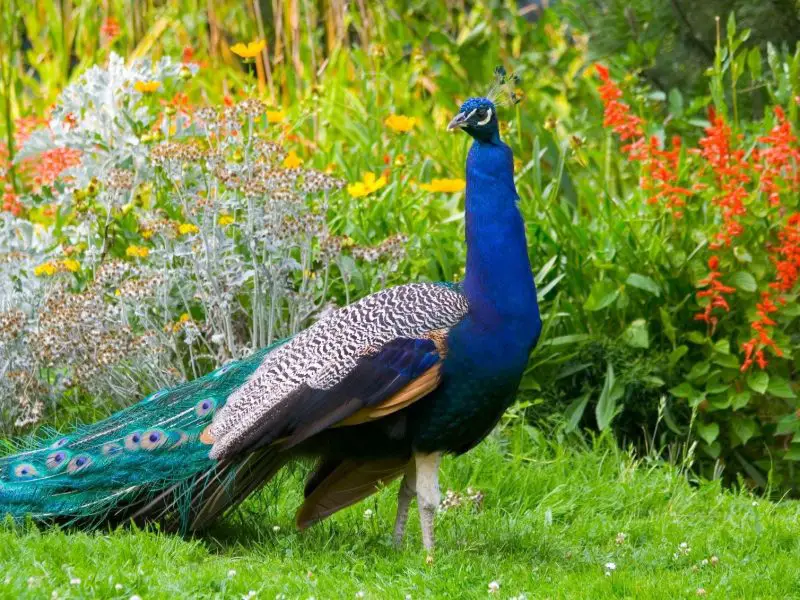
Peacocks are omnivores, which means they consume both plant and animal-based foods. In their natural habitat, which ranges across the Indian subcontinent and parts of Southeast Asia, wild peacocks forage for food throughout the day. Their diet varies with the seasons, availability of prey, and environmental conditions.
Wild peafowl exhibit opportunistic feeding behavior. They peck at whatever they find, whether it’s a tasty fruit, an insect, or even small reptiles. This dietary diversity not only supports their nutritional needs but also contributes to their survival in the wild.
The Importance of a Balanced Diet for Peacocks
A healthy peacock diet is crucial for maintaining vibrant feather coloration, strong immune systems, successful breeding, and overall well-being. In captivity, this means replicating their natural food sources as closely as possible while also supplementing with commercial feed where necessary.
Let’s explore the top 15 foods that peacocks absolutely love and thrive on.
1. Grains and Seeds
A Staple in Any Peacock’s Diet
Grains and seeds are a major source of carbohydrates, fiber, and essential nutrients. Peacocks particularly enjoy cracked corn, millet, wheat, barley, and sunflower seeds. These ingredients provide the energy needed for foraging, mating displays, and flight.
Feeding Tip
Offer grains in shallow dishes or scatter them to encourage natural pecking behavior. Avoid feeding moldy or stale grains, as they can lead to digestive issues or fungal infections.
2. Insects
Protein-Rich Natural Prey
Insects form a vital protein source for wild and domesticated peacocks. They love to eat grasshoppers, beetles, crickets, and ants. This food source is especially important for growing chicks and during breeding season when nutritional demands are higher.
Feeding Tip
In a captive setting, you can provide live or dried insects such as mealworms or crickets, available at pet supply stores.
3. Fruits
Nature’s Sweet Treats
Peacocks are fond of a wide range of fruits including bananas, apples, mangoes, papayas, and grapes. These foods are rich in vitamins like A and C and offer hydration through natural sugars and water content.
Feeding Tip
Cut fruits into small pieces and remove any seeds or pits that might be toxic, such as apple seeds or cherry pits.
4. Vegetables
Nutrient-Dense and Digestive-Friendly
Vegetables like leafy greens, carrots, cucumbers, squash, and peas are peacock favorites. They contribute fiber, minerals, and antioxidants that help maintain healthy skin and feathers.
Feeding Tip
Serve raw vegetables chopped or shredded for easy consumption. Avoid feeding them anything too fibrous or hard to digest, such as raw potatoes or onion.
5. Small Reptiles and Amphibians
A Natural Protein Boost
In the wild, peacocks occasionally consume small reptiles such as lizards and amphibians like frogs. This high-protein food is consumed opportunistically and supports feather regeneration and overall strength.
Feeding Tip
While not commonly fed in captivity, knowing this helps understand their dietary flexibility in the wild.
6. Snails and Slugs
Moist, Soft-Bodied Prey
Peacocks relish snails and slugs, particularly after rain. These soft invertebrates provide hydration and protein and are easily digestible.
Feeding Tip
Allow peacocks to forage in moist environments where slugs and snails are present, especially in the morning or after rain.
7. Worms
Earthworms as a Natural Supplement
Worms are another excellent source of protein and are often found during peafowl foraging sessions. They help with muscle development and boost the immune system.
Feeding Tip
Add earthworms to their diet occasionally, especially for chicks and molting adults. Dried worms are also available as an alternative.
8. Berries
Colorful, Antioxidant-Rich Delicacies
Peacocks love berries such as mulberries, blackberries, blueberries, and strawberries. These are not only tasty but loaded with antioxidants that support feather pigmentation and cellular health.
Feeding Tip
Offer fresh berries sparingly, as too much sugar can cause digestive upset. Ensure the berries are washed and free of pesticides.
9. Grubs and Larvae
A Nutrient-Dense Snack
Larvae and grubs are packed with protein and fat, two critical elements for growth and energy. These are common prey for wild peacocks scratching through leaf litter.
Feeding Tip
You can feed freeze-dried black soldier fly larvae or mealworm grubs as a protein supplement.
10. Legumes
Beans and Lentils for Protein and Fiber
Cooked legumes such as lentils, chickpeas, and black beans are well-liked by peafowl. These provide protein and fiber, supporting digestion and muscle development.
Feeding Tip
Only serve cooked, unsalted legumes, and avoid canned varieties that contain preservatives or added sodium.
11. Commercial Game Bird Feed
Balanced and Convenient
Specialized game bird feed or turkey starter feed can be used as a base diet for captive peacocks. These feeds are formulated to meet the nutritional needs of large birds and are especially good for young peafowl.
Feeding Tip
Ensure the feed is appropriate for the age of the bird, starter for chicks, maintenance for adults, and is fresh and mold-free.
12. Grass and Weeds
Forage Material and Natural Grazing
Peacocks naturally graze on grasses, dandelions, and other broadleaf weeds. These materials help with digestion and provide trace nutrients.
Feeding Tip
Let peafowl free-range in a safe, pesticide-free area. Avoid areas treated with herbicides or lawn fertilizers.
13. Grain-Based Kitchen Scraps
Sustainable and Satisfying
Cooked rice, oats, pasta, and bread are sometimes given to peacocks in small amounts. These starchy foods should be considered treats, not staples.
Feeding Tip
Avoid salty, spicy, or oily leftovers. Plain, whole-grain options are best and should be given in moderation.
14. Flowers and Flowering Plants
Edible Blooms for Enrichment
Peacocks sometimes nibble on flowers such as hibiscus, roses, and marigolds. These provide trace vitamins and also serve as environmental enrichment.
Feeding Tip
Ensure the flowers are pesticide-free and grown organically. Never offer unknown plants that might be toxic.
15. Nuts
High-Energy Seasonal Food
Peacocks enjoy shelled nuts like peanuts, walnuts, and almonds in small quantities. These are high in fat and protein, making them ideal for cold seasons or energy boosts.
Feeding Tip
Offer unsalted, unflavored nuts in small amounts. Crush large nuts to make them easier to eat.
Foods You Should Never Feed Peacocks
While peacocks are adventurous eaters, some foods can be harmful or even fatal. Here are items you must avoid
- Avocados contain persin, which is toxic to birds
- Chocolate contains theobromine, dangerous to birds
- Caffeinated beverages can cause heart and nervous system issues
- Onions and garlic may lead to anemia and digestive upset
- Raw beans, especially kidney beans, contain lectins harmful to birds
- Moldy or spoiled food can cause bacterial or fungal infections
How Often and How Much Should Peacocks Eat?
Adult peacocks typically eat twice a day, once in the morning and again in the late afternoon. Each adult peacock consumes about half to one pound of food per day, depending on the season, breeding cycle, and activity level.
For chicks, feeding should occur more frequently, three to four times daily with high-protein starter feed and small insects.
Always provide fresh, clean water alongside their meals, especially if feeding dry foods or in hot weather.
Seasonal Dietary Needs of Peacocks
Peacocks’ diets change with the seasons
- In spring and summer, they increase consumption of insects and protein for molting and mating
- In fall, they consume more grains and nuts to build fat reserves
- In winter, they benefit from warm, high-energy foods like legumes and nuts
Feeding Peacocks in Captivity vs. the Wild
In the wild, peacocks forage freely and choose from a wide range of food sources. In captivity, however, it is your responsibility to provide a balanced, diverse diet. Over-reliance on commercial feed can lead to nutritional imbalances, so aim to include natural foods as much as possible.
Enrichment activities such as scattering feed, hiding insects under leaves, or hanging vegetables from string can simulate foraging and keep peacocks engaged.
Conclusion
Peacocks are not only magnificent to look at but also fascinating when it comes to their dietary habits. From fruits and grains to insects and even small reptiles, these birds thrive on a varied, omnivorous diet. Whether you are raising peacocks or just watching them roam, knowing what they eat ensures their health and longevity.
By offering a mix of the 15 foods peacocks absolutely love, you’ll be promoting beautiful plumage, energetic behavior, and a longer, happier life for these regal birds.

